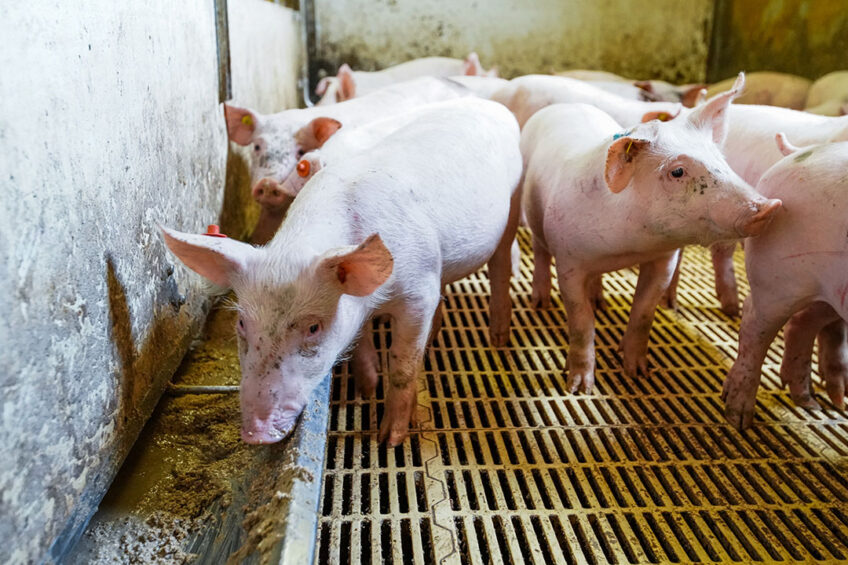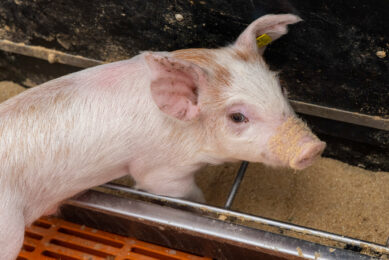Weaning age: impacts on gut health, performance, and behaviour

In modern swine production systems, weaning is an essential period. During this period, piglets experience social stresses, such as moving to the post-weaning building, separation from sows, and living with piglets that are not their littermates. Piglets raised under free-range conditions are weaned between 12 and 17 weeks of age, but in intensive swine farming systems, piglets are usually weaned between 2 and 5 weeks of age, when the gut and immune system are immature.
Post-weaning changes generate stress that affects piglet gut health, performance, and behaviour. Studies showed that later weaning improves health, enhances growth performance, and reduces mortality during the post-weaning period. Therefore, it is important to consider all these effects to choose the right time to wean piglets.
Impact of weaning age on piglet gut health
Gut microbiota are microorganisms, including bacteria and other single-celled organisms, that live in the digestive tracts of animals. Gut microbiota have numerous roles benefiting the host, such as digestion and fermentation of carbohydrates, production of vitamins, maintenance of normal functions of the intestinal villi, regulation of the immune responses, and protection from pathogenic bacteria.
In pigs, gut microbiota establishment starts at birth. Gut microbiota undergo compositional changes caused by environmental conditions, diet, age, and exposure to microbes from birth until weaning and during post-weaning period. Research showed that the pig gut microbiota alter in a predictable manner during post-weaning period and weaning age has a temporary effect on this microbiota. The temporary effects include an increase in microbial diversity 3 to 7 days post-weaning and a decrease in resistance genes to most antimicrobial classes post-weaning. However, the effect of weaning age on the long-term development of pig gut microbiota remains unknown.
Impact of weaning age on piglet performance
Stress associated with weaning leads to a decrease in water and feed intake, which affects the ability of the host to digest and absorb nutrients and results in reduced performance. It is estimated that only 50% of piglets consume their first meal within 24 hours of weaning, and 10% still have not eaten 48 hours later. However, piglets generally return to their pre-weaning level of energy intake 8 to 14 days post-weaning. Early weaned piglets gain less weight than later-weaned piglets. As would be expected, a larger body size of older piglets at weaning results in more feed disappearing in the week following weaning. In addition, early weaned piglets have greater mortality rate compared with later-weaned piglets.
Impact of weaning age on piglet behaviour
Weaning age impacts the time piglets spend at the feeder and drinker. Piglets wened later spend more time at the feeder compared to piglets weaned early. In contrast, early weaned piglets maintain a higher drinking rate than later-weaned piglets. Early weaned piglets show a higher incidence of belly-nosing than later-weaned piglets. However, later-weaned piglets spend more time nosing and chewing pen-mates and objects than early weaned piglets. Immediately following weaning, later weaned piglets spend more time interacting with their neighbours compared to early weaned piglets. Furthermore, weaning age has no effect on the time spent in aggressive behaviours and aggressive encounters at the feeder or drinker. Although, early weaned piglets spend more time performing escape behaviour compared with later weaned piglets.
Concluding remarks
The swine industry has shifted to earlier weaning to improve farrowing-crate utilisation, to increase numbers of piglets born per sow per year, and to enhance the number of pigs produced at a facility in a year. However, early weaning has some negative impacts on health, behaviour, and performance of post-weaning pigs. Therefore, many producers and scientists are re-evaluating weaning-age decisions to figure out an optimised weaning age and to maximise profitability of their pork operations.











